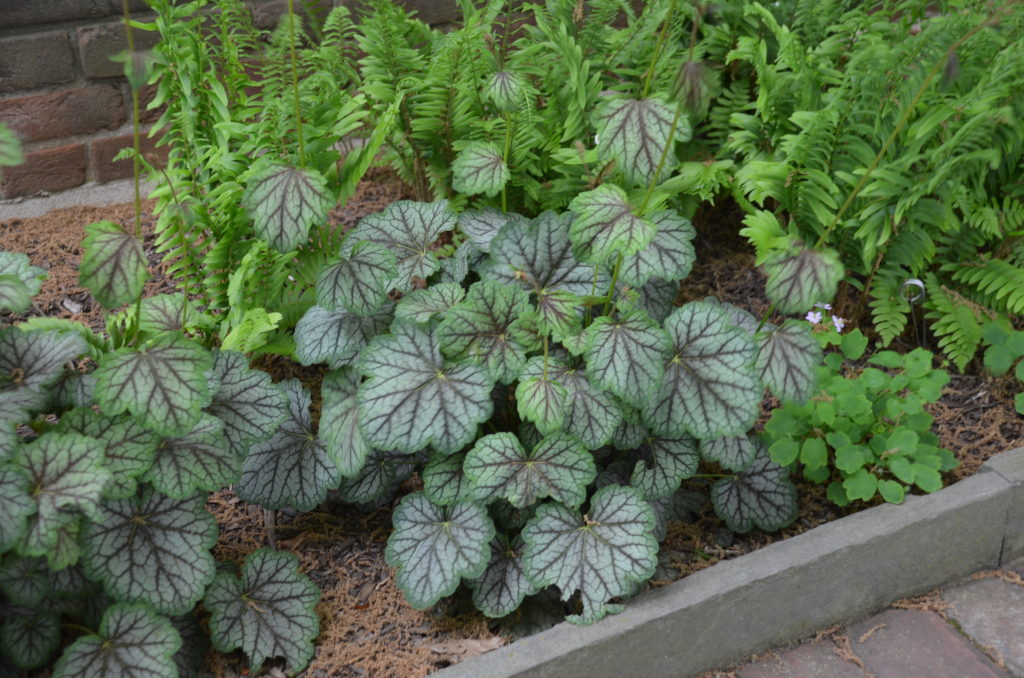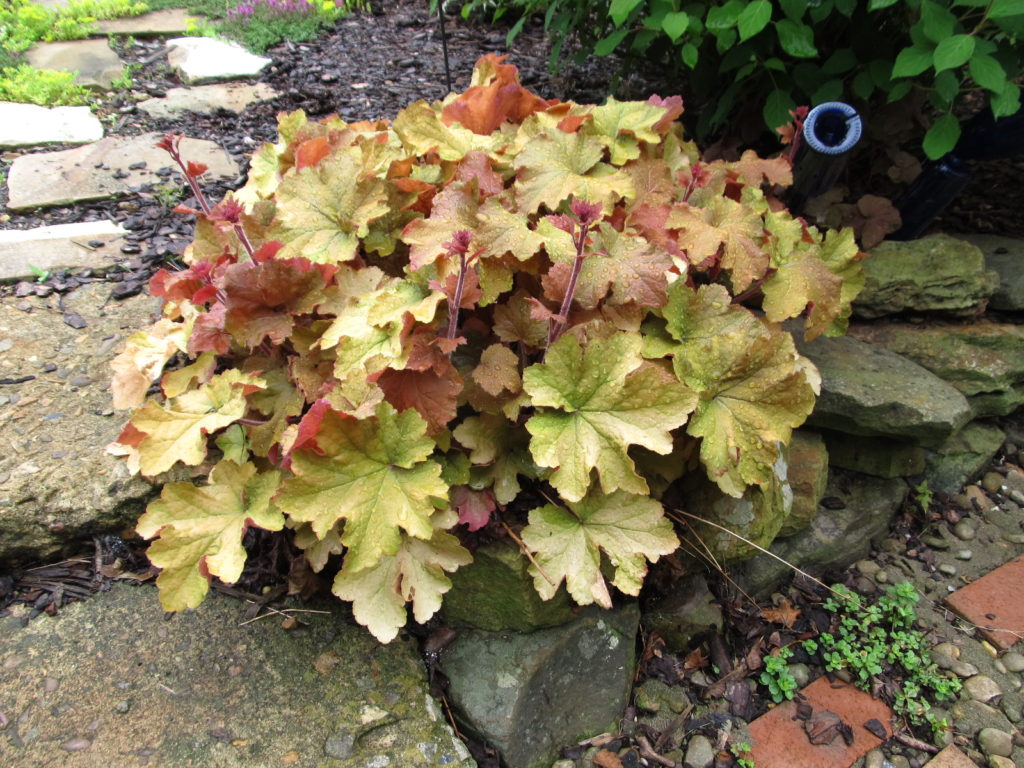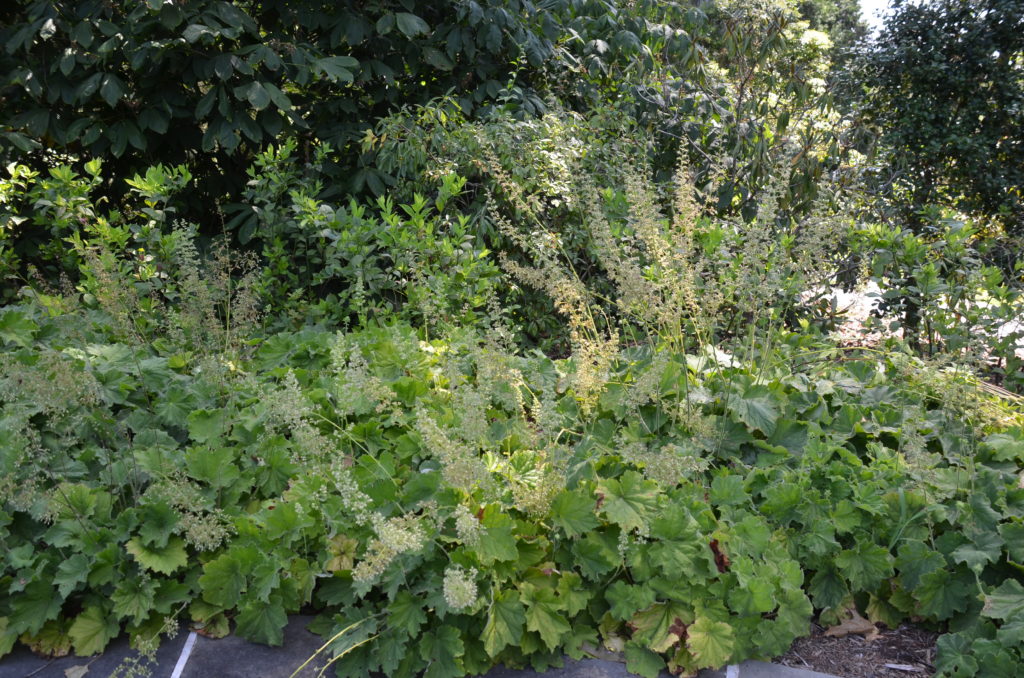Coral bells (Heuchera spp) or alumroot are Tennessee natives. They represent an almost limitless choice of foliage colors, sizes, and forms (USDA hardiness soils 4-9). The biggest chore a gardener has is selecting what cultivar(s) to plant. There is over one hundred to choose that range from grow 8 to 12 inches in height and 1 to 2 feet spread. The coral bell color palette is a landscape designer’s dream plant. Should I mention that some varieties bloom exceptionally well.

Foliage color choices range from lemon yellow to green to nearly black, that may be glossy, matted, or marbled. Spring / summer flowers stand above the foliage. Flower stalks may reach 2 to 3 feet in height. Coral bells are suitable in most any landscape situation from mixed borders, mass plantings, and containers.
In the south, heuchera plants are best in an open woodland setting, but can tolerate a fair amount of morning sunlight. Plant in a humus-rich, moist, well-drained soil. In the north, coral bells grow well in full-day sunlight. In southern gardens, coral bell hybrids with a Heuchera villosa bloodline are longer-lived where heat and humidity are major issues.
Additional choice: Plant breeders have successfully crossed heuchera with its botanical cousin Tiarella (“foam flower”) to produce a more tougher shade plants (written as “x Heucherella”).

Northern gardeners have found that a layer of winter mulch helps protect the plant crowns in zones 4 and 5. Heuchera and x Heucherella exhibit good drought tolerance. During the dry portion of the growing season, supply an additional 1- inch of water weekly. Avoid planting heucheras in wet soggy soils.
Heuchera and x Heucherella clumps should be dug up and divided every 3-4 years in early spring. Heuchera and x Heucherella are generally left alone by deer and rabbits. However, when populations are exceptionally high, these critters will eat any plant, including coralbells and their relatives.
In general, heuchera and x Heucherella are not troubled by disease and insect problems. Foliar nematodes may disfigure leaves in late summer. There is no suitable control measures against nematodes. Black vine weevil is reported to be a problem in the Northwestern U.S.
In southern gardens, some cultivars may be damaged by summer dieback identified as Sclerotinia fungus. Suggestion: gardeners should talk with one another to select cultivars that perform best in their region. Good air circulation is the best preventative to avoid diseases.

Favorites in my Tennessee Garden: ‘Citronelle’, ‘Caramel’, ‘Apple Spice’, ‘Georgia Peach’, ‘Southern Comfort’, Primo® ‘Black Pearl’, ‘Berry Timeless’, and two H. villosa hybrids: ‘Autumn Bride’ and ‘Bronze Wave’.

 Posted in
Posted in 
